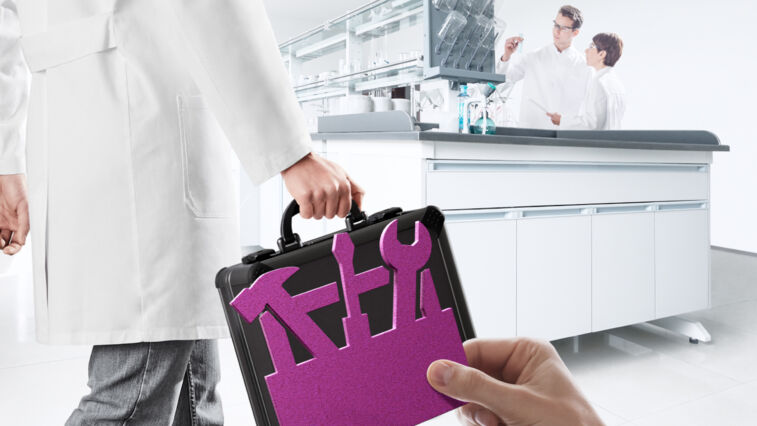
Enhanced mechanical properties
Plastics and Rubber
VISIOMER® methacrylate monomers are used to produce a wide variety of plastics and rubber. Most popular are artificial marble, PVC plastisols and as co-agents for rubber crosslinking. Molding compounds based on PMMA or unsaturated polyester resins may also contain multifunctional methacrylates as crosslinking agents.
Artificial marbles
Artificial marble is an attractive alternative to the original, expensive stone from a quarry. The artificial stone, which is nearly identical to natural stone, is winning over the market and recording growth rates in double figures. Artificial stone is made from 90% rock flour, the rest is plastic polymer.
Artificial marbles based on methacrylates are widely used in materials for kitchen countertops, sinks, vanities, bathtubs, tabletops, walls, interior fixtures, etc. They combine outstanding aesthetics and high-end texture with excellent durability. MMA is the most widely used monomer in this application.
Besides MMA, specialty methacrylate monomers such as VISIOMER® Terra IBOMA can add excellent dimension stability and hot water resistance to the finished products. Multifunctional methacrylates such as VISIOMER® 1,3-BDDMA, VISIOMER® 1,4-BDDMA, VISIOMER® EGDMA, VISIOMER® TRGDMA, and VISIOMER® TMPTMA are used to improve mechanical properties of plastic films and artificial marble resins.
PMMA molding compounds
PMMA molding compounds are mainly used in the car industry for headlamps, taillights and transparent panes for dashboards as well as household appliances, optical media (DVDs, lenses) and electronics. They are used in illuminated advertising applications and interior store displays. PMMA sanitary ware can be used in the production of bathtubs and shower trays. MMA is the principal monomer used for acrylic plastic casting. Multifunctional methacrylates, such as VISIOMER® 1,3-BDDMA, VISIOMER® 1,4-BDDMA, VISIOMER® EGDMA, VISIOMER® PEG 200 DMA and VISIOMER® TRGDMA, are used in smaller quantities to enhance thermostability and other mechanical properties of cast plastic sheets.
Polyvinylchloride (PVC) plastisols
PVC plastisols are dispersions of finely divided PVC particles in organic liquid media, known as plasticisers. Depending on the application, plastisols may also contain finely divided inorganic fillers, e.g. ground or precipitated chalks, barium sulphate, or talcum and pigments where necessary. Other important additives for plastisols are adhesion promoters (in coating formulations) and crosslinkers to increase the mechanical strength (Shore hardness). The two last-mentioned properties (adhesion and crosslinkage) are typically achieved by replacing volatile plasticizers in plastisols with multifunctional methacrylates such VISIOMER® 1,3-BDDMA, VISIOMER® EGDMA, VISIOMER® TRGDMA, and VISIOMER® PEG 200 DMA. Multifunctional methacrylates as adhesion promoters and hardeners solves coating problems with plastisols, e.g. as anti-noise compounds, for underbody protection of motorcars and as finishes on PVC flooring.
Rubber crosslinking
VISIOMER® 1,4 BDDMA, VISIOMER® EGDMA and VISIOMER® TMPTMA are co-agents for rubber crosslinking. Crosslinking agents traditionally used for vulcanization, such as sulfur donors, only work with unsaturated polymers. Saturated elastomer polymers need to be crosslinked by means of energy-rich radiation or peroxides, which can also be used for crosslinking unsaturated polymers. Compared to sulfur vulcanization, peroxide or radiation crosslinked technology improves thermal stability and ozone resistance in the product. Using co-agents in conjunction with peroxide to cure elastomers makes it possible to reduce the content of costly peroxides. This way, crosslinking density and curing speed can be accelerated as well.




